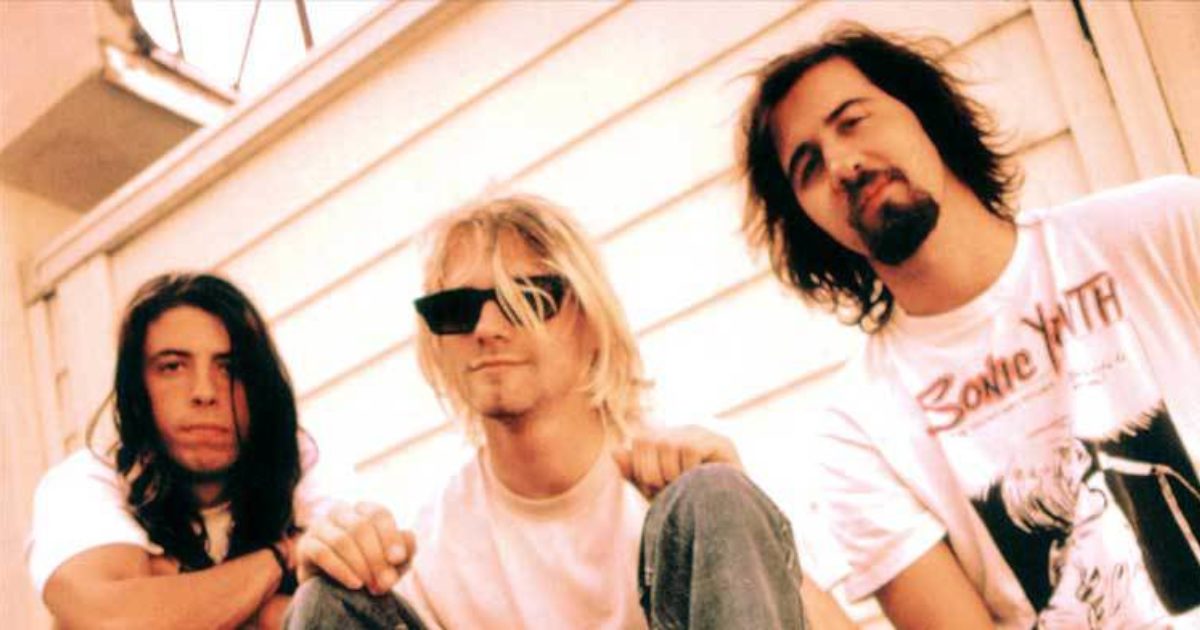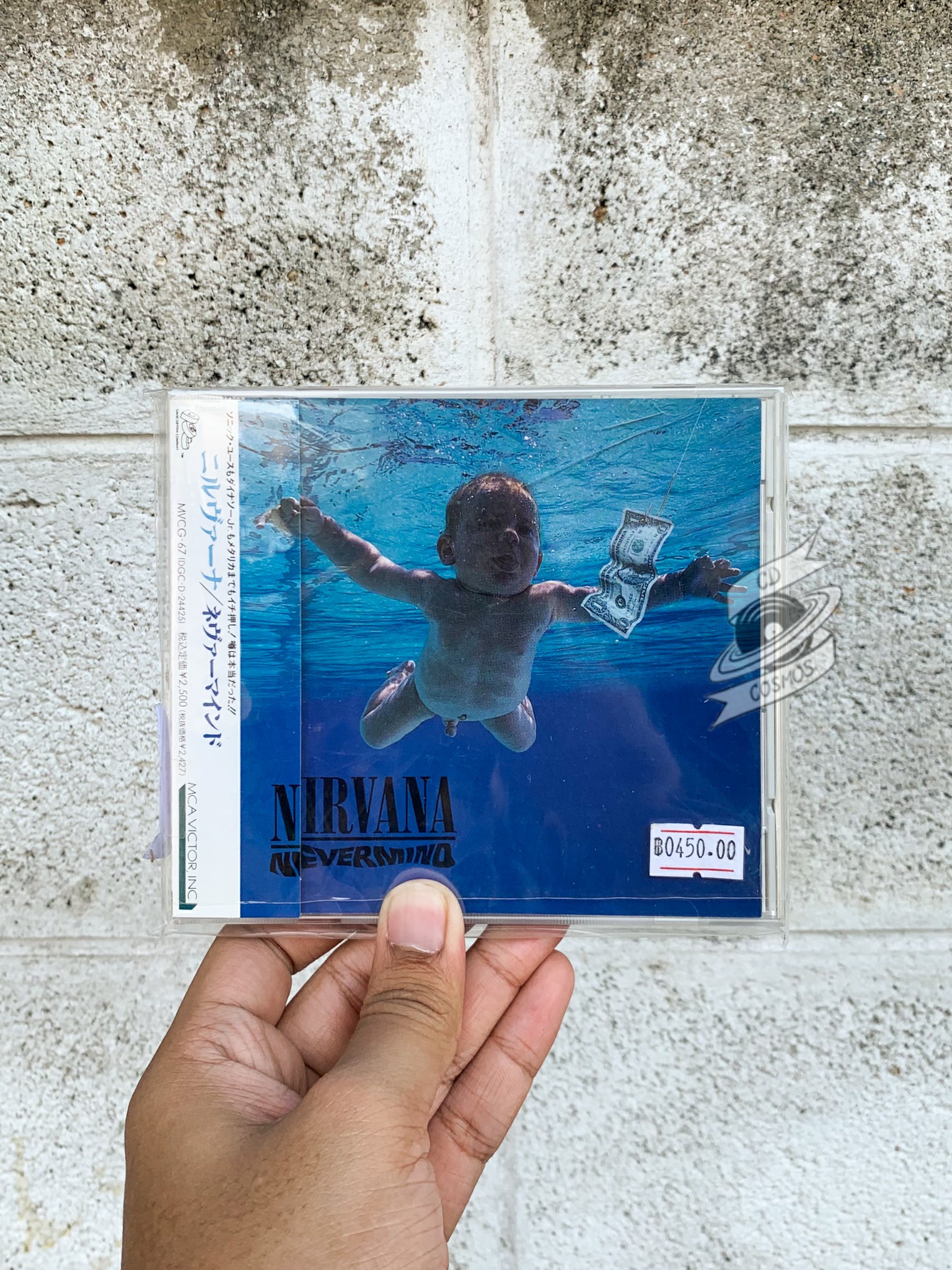
In Utero - the story behind Nirvana's third and final studio album – Backstage Originals
For some, In Utero was the album that best encapsulated Nirvana’s primal sound. For others, it was a controversial record that never managed to hit the heights of Nevermind and suffered as the result of production difficulties. What’s certainly true, is that it’s almost impossible to extract In Utero from the context
For some, In Utero was the album that best encapsulated Nirvana’s primal sound. For others, it was a controversial record that never managed to hit the heights of Nevermind and suffered as the result of production difficulties.
What’s certainly true, is that it’s almost impossible to extract In Utero from the context in which it was created nor isolate it from the events that unfolded after its release. While the album hit the shelves in September 1973, Kurt Cobain took his own life in April 1974. Consequently, the album has often been interpreted and explained in reference to Cobain’s suicide.
Today, we’ll be taking you through the story of In Utero and studying both the narrative that surrounds it and the legacy it left behind.
A Reaction to “Candy Ass” Nevermind
In Utero is Nirvana’s third album and was recorded at a time when the group were arguably the biggest band in the world. The radio-friendly hits of their previous album, Nevermind, had brought the band significant mainstream success, topping the Billboard 200 chart and pushing grunge beyond the underground and into the general public’s wider consciousness.
For a band that was rooted in the DIY, anti-corporate, pro-authenticity punk movement, this success was problematic. Cobain, in particular, struggled to process and manage the conflict between artistic integrity and commercial success. Disenchanted with the trappings of fame and enraged by media intrusions into his private life, Kurt found himself in a position in which pressure was applied from all sides and there seemed no way out.
It’s important to view In Utero within the context of Nevermind’s success. Cobain is on record as having said that he felt the band’s second album was far too commercial, describing it as “candy ass” and resenting its accessibility and the “jocks, racists and homophobes” who began listening to the group on the back of Nevermind’s extensive radio play. Instead of repeating that success with their third album, Kurt wanted to return to the rawer sound of the band’s debut, Bleach.
Bringing Steve Albini On Board
In Cobain’s search for artistic authenticity, he turned to the band that he had most connected with and been inspired by in his youth - the Pixies. More specifically, he turned to Steve Albini, the Pixies’ legendary producer and a darling of the punk, post-punk and alternative scene in the US. Renowned for his lightning-quick approach to recording and his “don’t overthink it” philosophy, Albini had an excellent track record and, more importantly, all the indie credentials you could ask for.
Albini chose the studio himself, deciding to take the band out to Pachyderm Studios in rural Minnesota. Known for his principled approach to the music business, he refused to take a cut of the band’s royalties, describing the practice as “ethically indefensible.” Instead, he worked for a flat fee of £100,000. Initially, the band and Albini set a deadline of two weeks to finish the album, but all recording was finished within six days and the initial mix took just five.
The In Utero Production Debate
One of the biggest debates surrounding the album is the production. Albini’s preferred recording style involved getting as much of the band playing live together as possible and occasionally recording the drums separately or adding extra vocals or guitar tracks. This achieved two things.
First, it immersed Cobain’s vocals in the mix, rather than sitting them atop the instrumentation, as was the established method for radio-friendly hits. Second, it lent even greater power to Dave Grohl’s ferocious drumming.
This was partly due to the way Albini surrounded Grohl’s drum kit with more than 30 microphones, partly due to recording the drums in the studio kitchen for its natural reverb and partly Grohl’s magnificent playing. While Cobain’s lyrics are often the focus of In Utero analysis, Grohl’s drumming is often overlooked and may rank amongst the best-recorded performances of the decade.
At the end of the recording process, Cobain played the finished album to the DGC label executives. Expecting more Nevermind-esque hits, they made their disappointment clear. Concerned about the success of the album but desperate to hold onto his ideals and release the music he believed in, Cobain was caught between a rock and a hard place.
In the end, a compromise was struck. The album’s singles were handed over to R.E.M producer, Scott Litt, to remix in a more radio-friendly style. This left a bad taste in everybody’s mouth, most notably Albini, who refused to hand over the masters at first.
Reading the Album with Hindsight
On release, In Utero was received warmly, though some critics couldn’t help but compare it unfavourably to Nevermind. There were controversies over the inclusion of Rape Me on the album and Wal-Mart and Kmart refused to sell it until the track name was changed. Despite this, it sold well.
In April 1994, Cobain was found dead in his Seattle home. This irrevocably changed the way the album was interpreted and many fans and critics would go on to argue that the album’s lyrics and themes foreshadowed Cobain’s death. While the album is, without doubt, a reflection of a mind in turmoil and on the edge, certain aspects suggest there’s some historical revisionism at play.
For instance, the lyrics of Pennyroyal Tea, which focus on depression and death, were penned as early as 1990 - three years before In Utero’s release. Likewise, All Apologies, one of Nirvana fans’ favourite tracks and supposedly a premonition of what was to come, was also written in 1990.
That’s not to say that the album doesn’t speak to Kurt’s mental and emotional states during recording or that it doesn’t contain indications that Cobain was close to taking his own life. But to read the album as exclusively relating to the frontman’s suicide is to ignore all the album’s complexity. This is a recording that’s just as much about fame, family and the never-ending battle between mainstream success and artistic integrity as it is depression and death.
The story behind In Utero is the story of that battle played out - a band that wanted to retreat from (what they saw as) the shallow commercialism of their previous album, who recorded a masterpiece of alternative music and were then forced into artistic compromises by their record label bosses. Fortunately, time has enriched In Utero’s legacy and it is now viewed as an absolute classic that shows the band stepping beyond the success of Nevermind in their own, unique way.
How do you feel about In Utero? Does it rank as Nirvana’s greatest album? We would love to hear your thoughts on how the record has been interpreted and what it means to you, so get in touch and leave us a comment below.
Check out our best-selling Nirvana T Shirts

Nirvana Celebrate 'In Utero' 30th Anniversary •

Nirvana Paul's Gigography

Inside The Making Of Nirvana's In Utero
Did Kurt Cobain write any songs before he joined Nirvana? If so, what were they called? - Quora

Nirvana have released two previously-unheard live recordings from their massive In Utero box set

Nirvana's in Utero Celebrates 30 Years With Super Deluxe Reissue

New Nirvana Biography: Kurt Cobain, Dave Grohl Revelations

In Utero - the story behind Nirvana's third and final studio album – Backstage Originals

Time heals': A look back at Nirvana's 'In Utero

Pistols, pills and Cobain on the cusp: Inside Nirvana's doomed final tour









